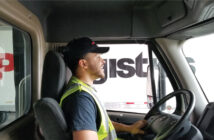During the coronavirus pandemic, the trucking industry has shown America once again how resilient our industry is. From the early-day runs on groceries and closures of rest stops, to the delivery of those widely-awaited shots in arms, truckers have navigated enormous obstacles to keep our country moving through this crisis. And although we’re approaching that proverbial light at the end of the coronavirus tunnel, it’s a matter of fact that the industry will always encounter new headwinds after every hurdle we clear.
One of the most serious challenges facing our industry, both presently and over the long-term, is the rampant lawsuit abuse being inflicted on motor carriers by the plaintiffs’ bar. For years, trial lawyers have treated truck accident litigation as a fast lane to Jackpot Justice. By perverting civil litigation into a profit center to line their own pockets, they’ve created a climate of pervasive lawsuit abuse that’s upending the trucking industry and choking our economy’s supply chain.
This trend has sent insurance rates skyrocketing to unsustainable levels, irrespective of a fleet’s safety record. The American Transportation Research Institute cites rising premiums as a top concern for motor carriers, with “low risk” motor carriers experiencing 8 percent to 10 percent increases in insurance costs year-over-year, while new ventures and average-to-marginal carriers are experiencing a 35 percent to 40 percent annual increase – a trend that has occurred for three consecutive years.
These increases hit small businesses particularly hard, with smaller fleets and owner-operators paying out-of-pocket considerably more on a per-unit basis than larger fleets. Many shuttered carriers have cited rising insurance costs as the primary reason for going out of business.
Inflated insurance premiums are being propelled by an explosion of nuclear verdicts against motor carriers, which are generally defined as a jury award in which the penalty exceeds $10 million. Data compiled by ATRI show lawsuits targeting trucking have increased at an exponential pace, seen in both the volume of cases and the size of verdict awards. When evaluating verdicts in excess of $1 million, the average size increased from $2,305,736 to $22,288,000 – an increase of 967 percent – in the eight years between 2010 and 2018.
The average size of such verdicts increased 483 percent between 2017 and 2018 alone.
To be clear: our industry strongly believes when a motor carrier acts wrongfully – and that wrongful conduct injures those with whom we share the road – the motor carrier should be held accountable, and those injured should be fairly compensated. What we will not stand for, however, is a profit-driven litigation environment that produces jury verdicts grossly disproportionate to the alleged harm or completely untethered from actual responsibility for the underlying accident in the case that’s being heard.
Take for example one notorious case from 2014 after a pickup truck carrying a Texas family lost control in icy conditions while driving down a divided interstate. The pickup veered through multiple lanes, careening all the way across the grassy median and into oncoming traffic, before spinning out in the direct path of a tractor-trailer. Tragically, a seven-year-old died and a 12-year-old was left paralyzed. The truck driver was not cited for any violations by the responding officers, as he was traveling well below the posted speed limit and did not lose control of his truck.
Despite these facts – none of which were in dispute – the jury issued a nearly $90 million verdict against the trucking company after a civil lawsuit was filed. The plaintiffs’ attorneys argued the case goes “beyond the actual accident per se.” Employing a common tactic known as the “reptile theory,” the plaintiffs’ bar is skilled at convincing juries that an outsized verdict is necessary to send a broader message – regardless of what actually transpired in the particular case at hand.
In order to stop lawsuit abuse, our industry must fight back. The plaintiffs’ bar will not take their sights off our industry voluntarily; they’ll only move onto their next target once we shift the paradigm to make truck accident litigation a higher-cost and lower-benefit proposition for them. This is where American Trucking Associations, our federation of state trucking associations, and a rolling army of grassroots trucking advocates across the country come into play.
The plaintiffs’ bar knows how to exploit certain rules to game the system and stack the decks against motor carriers. But by enacting targeted reforms at the federal and state level, we can restore balance and fairness to the system, weaken incentives that fuel predatory litigation and mitigate factors that inflate the size of nuclear verdicts. Through a coordinated, multi-year and multi-track campaign spearheaded by the ATA Federation, we have begun to deliver on those aims.
At the federal level, ATA supports the introduction of legislation in Congress requiring the disclosure of third-party litigation financing. Nuclear verdicts present such a lucrative prospect that investment bankers and other shady financiers from around the globe want in on the action. Treating civil justice like a speculative commodity, these sharks will front the litigation costs of a prospective lawsuit in exchange for a slice of the settlement, enticing more frivolous filings and often netting themselves a massive return on their investment. This is not some niche practice; Third-party litigation finance is now a $400 billion global industry, with the largest market in the United States.
We also support the introduction of federal legislation to criminalize the staging of accidents. Lawsuit abuse has given rise to organized crime rings around the country who deliberately cause accidents with tractor-trailers as a pretext to sue them in court. One such fraud ring was recently exposed in Louisiana, following an extensive investigation by the FBI. Dozens have been indicted on conspiracy charges, including a plaintiffs’ attorney who helped mastermind the plot. Yet as brazen as this scheme was, there is no federal law on the books that actually prohibits actual staging of accidents, limiting prosecutors to pursue secondary and tertiary charges like wire fraud.
ATA is also pursuing federal legislation to prevent “forum shopping” – a common practice by plaintiffs’ attorneys to keep cases out of federal court, opting instead for preferred state forums presided over by judges who have a history of favoring claimants. A Highway Accident Litigation Fairness Act would give federal courts jurisdiction over catastrophic truck accident cases involving interstate commerce and provide motor carriers a more equitable venue to defend themselves from abusive lawsuits.
The ATA Federation is also pursuing a number of measures across multiple states designed to increase transparency and control the costs of civil litigation. One example is a limit on “phantom damages,” which are created when rewards are calculated using charges billed by the medical provider rather than what the patient or insurer actually paid. The defendant – in our case, motor carriers – may be held liable for these charges, even though they were never actually paid by the plaintiff. Last year, the Iowa Motor Truck Association succeeded in getting a law passed by the state legislature that removes any possibility for plaintiffs to recover more than the amount they actually paid.
Another measure is the elimination of the “collateral source rule,” which prohibits a jury from considering evidence that a health insurer helped pay the medical bills or otherwise compensate the plaintiff for their economic loss. In essence, this allows plaintiffs to get compensated for the same damages twice – once by their insurer, and a second time by the defendant. Last year, our industry helped enact measures eliminating or amending the collateral source rule in both Louisiana and Iowa.
A third measure our industry is pursuing at the state level is repeal of the “seatbelt gag rule.” More than half the states, including Georgia, prohibit defendants from presenting evidence that the claimant was not wearing their safety belt. The increased medical costs from not wearing a safety belt are substantial: A 2015 study by the National Highway Traffic Safety Administration estimated that needless deaths and injuries that result from non-use of the seatbelt costs society more than $10 billion annually. Under the seatbelt gag rule, the defendant can be held liable for these costs, even though they were incurred by the plaintiff’s negligence.
In April of this year, the West Virginia Motor Truck Association succeeded in passing a bill through their state legislature to amend the seatbelt gag rule. Under this new law, the defense can now introduce evidence to show the plaintiff’s failure to use a safety belt exacerbated their injuries and increased their medical bills. The Louisiana Motor Truck Association helped pass similar legislation in their state last year.
These are but a few of the state-level measures we’re currently working on, and none of these reforms at the federal or state level will be a silver bullet in this fight. But their cumulative effect will help level the playing field over time. With each additional victory, we’re sending an unmistakable message to the plaintiffs’ bar that our trucks are not piggy banks to be shaken down. By going on the offense, we’ve put them on defense – diverting their time, money, and resources as they invest in advertisements and lobbying efforts to defend their interests.
The road to stopping lawsuit abuse will be a long and challenging one for the trucking industry, but navigating challenges are what truckers do best.
While we are working and waiting on reform, we still face the realities of nuclear verdicts – join GMTA for our Web series on Nuclear Verdicts, learn more here.



